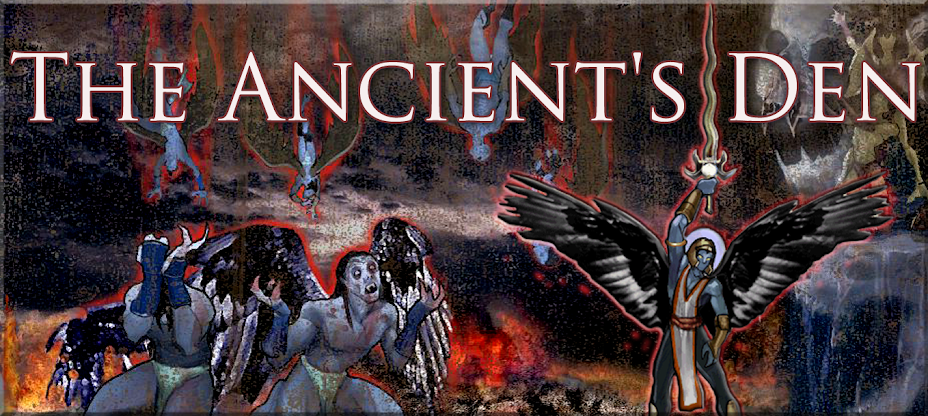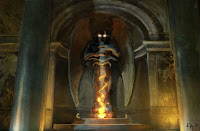Soul Reaver came out in 1999 after a few months of delay. The game was almost cut in the middle - the retail version did not contain lots of the intended abilities and areas. The reason behind this decision was the lack of time to incorporate them properly within the game. However, the audio in the released version also includes the additional cut dialogue, which is very interesting to hear. After fighting Rahab, Raziel would go on a quest to invade Dumah´s fortress and Turel´s smokestack in the North. In order to fight Turel, Raziel would either have first gained the Shift-at-Will ability from Kain after battle at Chronoplast (which is very interesting, because in the later games, this ability is never mentioned and was apparently discarded) to get to the Undercity Lair to fight the Priestess, or he first fought the Priestess and then Kain at Chronoplast. The abilities gained from these additional fights were intended to allow Raziel to enter many areas (the Sound Glyph for example) and are accessible via the trainer, WinHack or cheat codes. Although it is not possible to control the enemy vampires, the camera can be at least placed behind them instead of Raziel, giving an insigth on the possession ability of the Priestess. Gameplay was also oriented on gaining various elemental Reavers present in future games, not just the Fire Reaver. The area of the Silenced Cathedral was much bigger too and the top is completely absent. The game´s code includes the complete list of the areas which are absent. The only exception are the City 10, 11 levels. They can be loaded with WinHack and even though the connection between them is not entirely correct, they are playable. The tunnel is located next to the large area with a water channel indicating that Raziel would have accessed the Undercity Lair from the upper part of the City. The fountain with the health fragment and the stairway both bear the "mrlck" designation and vampiric writings, so it is safe to assume they were part of the deleted Smokestack area.
The ending was also very distinct. After acquiring the Ariel Reaver, Raziel fought the final battle with Kain at his mountain retreat, mostly regarded to be Malek´s Bastion. Raziel finally killed Kain and gained the Amplified Reaver, capable of killing any vampire on one hit. Now unstoppable, he climbed to the upper part The Silenced Cathedral and rang its bells, effectively exterminating all the vampires in Nosgoth. The Elder God expressed his satisfaction with the outcome, claiming the Wheel of Fate will spin again. Some might claim that Raziel did not survive the hymn of death. However, since he is a wraith and no longer a vampire, it seems that he remained unharmed (Raziel was unaffected by the Sound Glyph spell as well). In this ending he probably served further to devour the souls of sluaghs in the Spectral Realm or perhaps the Elder got rid of him. Did the Elder God just unmake him (as the Elder threatened him in Soul Reaver 2) after Raziel was of no use? This ending also gives no clues on the restoration of the Pillars. The early trailer Salvation, Revelation, Deceit might provide a clue on the outcome. Salvation migth stand for Raziel´s resurrection, revelation for Raziel´s past as a Sarafan priest, so what does deceit mean? Could it be the Elder God´s betrayal in the end as the Pillars stay decayed after Kain´s death or Raziel´s unmaking? Nonetheless, although the story being still unresolved, I am thankful that Crystal Dynamics continued Kain´s legacy. They have added more depth to the characters and gave explanation to many answers, despite raising so many others.
For further details on the deleted parts of Soul Reaver, please visit Ben Lincoln´s site.

